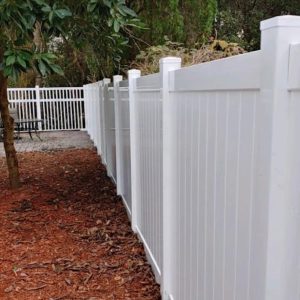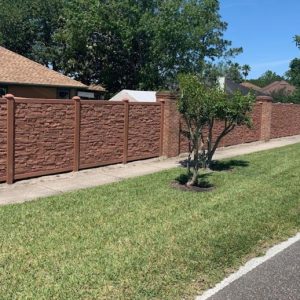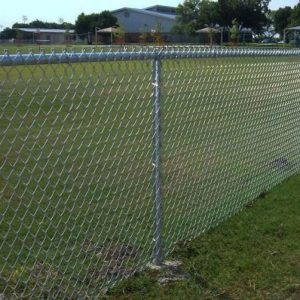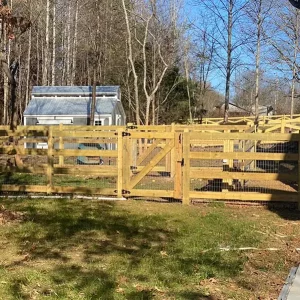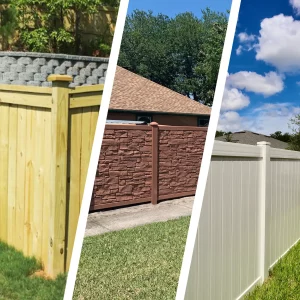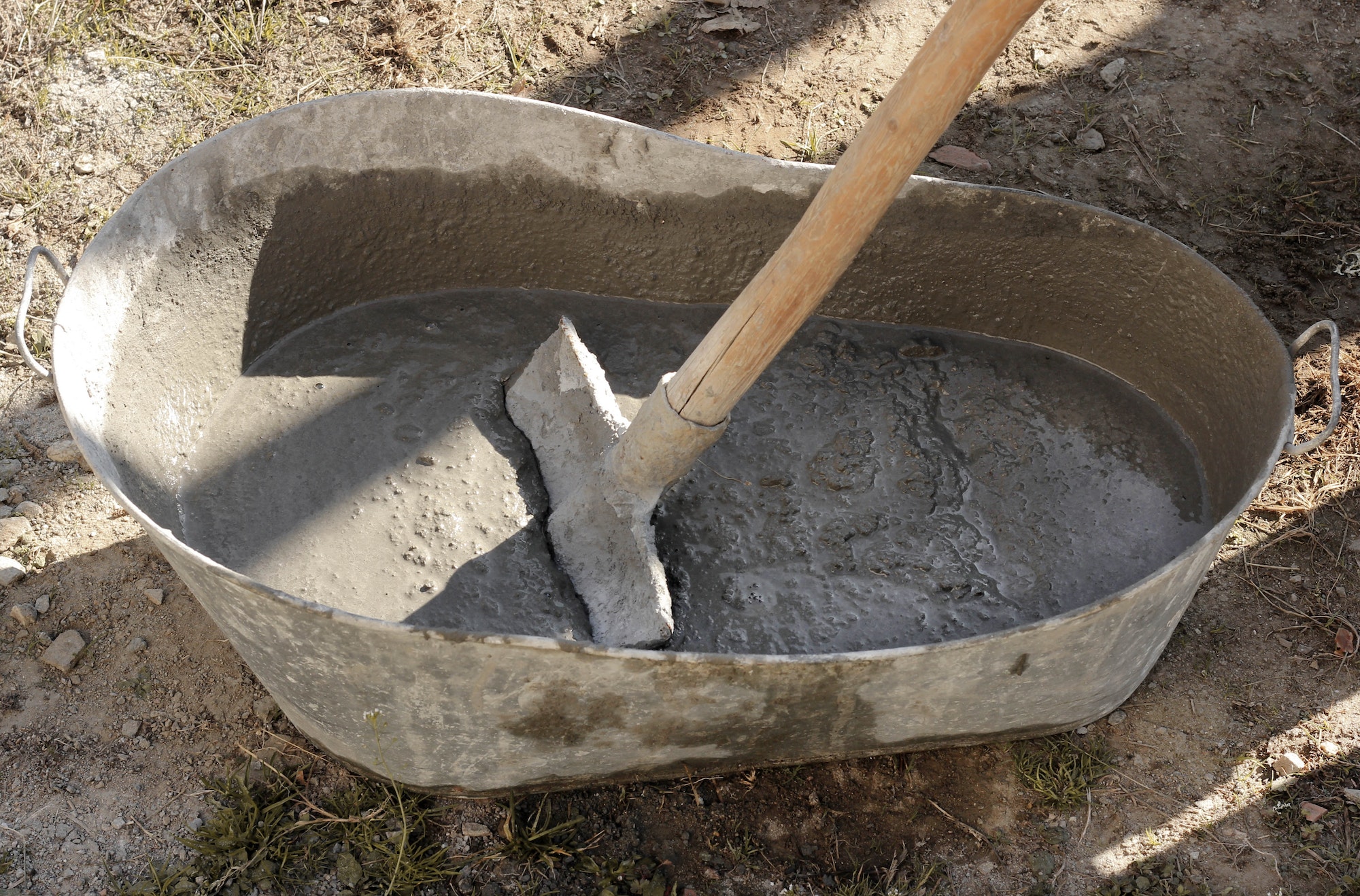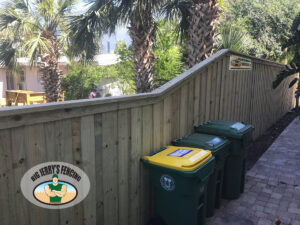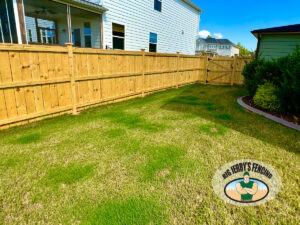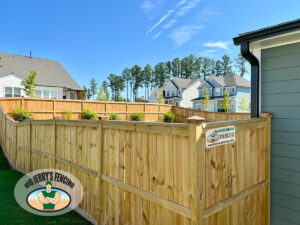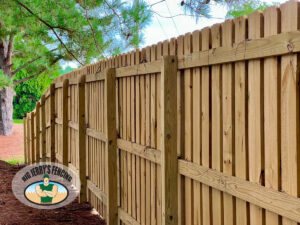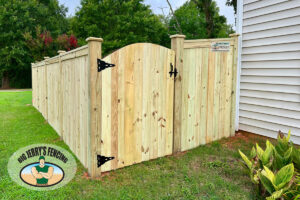Do you set your fence posts in concrete? It’s one of the most common questions that homeowners ask fence companies. Concrete provides a strong foundation for fence posts, but in some regions, using concrete on wood fence posts can expedite the rotting process. Before addressing whether to use concrete or not, you must consider using the right type of material and digging the proper post hole. If you don’t use ground contact lumber meant for outdoor use, and if you don’t set the post in the ground with the proper depth, it won’t matter whether you use concrete.
Use the Right Type of Wood
Different types of wood perform dramatically differently when outdoors over the long term. Pressure-treated wood is durable and affordable and is among the most used types of lumber for fence construction. Also commonly used and considerably more expensive are beautiful, naturally resistant species like cedar, cypress, and redwood. These types of wood contain resins that forestall the harmful effects of pests and moisture. No matter what type of wood you select, be sure you’re buying lumber labeled as suitable for ground contact.
Dig a Proper Post Hole
How deep should you dig your fence post holes? The answer depends on the soil type, fence design, height, and even where you live. Building codes and ordinances in your area may stipulate a legal depth and diameter for fence-post holes. If not, conventional rules of thumb offer a reliable guide. In general, the depth of the post’s hole needs to be about 1/3 of the above-ground height of the post. This means if you are installing a fence with a finished height of 6ft, then you should have at least 2ft of the post below ground.
Additionally, the bottom of the post needs to sit below the frost line (reference local codes for exact requirements). The frost line (also called frost depth) varies from region to region. For example, the frost line in Holly Springs, North Carolina, is 10 inches, while the frost line in Pittsburgh, Pennsylvania, is 44 inches.
Be sure to use the proper tool for the job. If you use a regular shovel, you will end up with a cone-shaped hole. Instead, use a posthole digger or auger to dig a proper hole to set your post in. If you do not have the tools required, you can usually purchase or rent them at your local home improvement store.
Reasons to Use Concrete:
A fence is only as strong as its posts. The American Standards for Testing Materials (ASTM) suggests always setting fence posts in cement. One of the most important reasons your fence posts should be set in concrete is to keep them plumb and level over time. If all supporting the fence post is loose soil or sand, a good storm with heavy rains and strong winds can leave your fence leaning and posts sagging. By setting them in concrete, you have a heavier base for your post and a larger hard surface area in the ground that won’t be as prone to leaning into the loose soil beside it. Using concrete when setting your fence posts will increase the sturdiness of the entire fence. Fences set in concrete are proven to move less in unstable soil and high winds than other mounting systems or methods.
The amount of concrete recommended for a fence post depends on the type of soil, fence design, and material, height, post size, and bag weight. Generally speaking, most fences require between ½ bag to 2 bags of concrete per post hole.
Reasons to NOT Use Concrete:
In some areas, like Jacksonville, Florida, concrete is typically not recommended on wood fences. Florida statewide annual average precipitation is almost 54 inches, with majority of the precipitation falling during the warmer months of June through September. So where does all that rain go? It seeps down in to the ground, which creates a normal groundwater level, just below the land surface. Depending on the geological composition of an individual’s property, the normal underground water level can be found within 12 inches of the surface during the rainy season and 6 feet in the dry season.
Wood acts very similarly to a sponge. If one end of a sponge is placed in water, it will eventually suck up the water saturating the whole. Unlike sponges, water cannot be easily removed by squeezing or ringing the lumber out. To dry, wood needs 30 days of complete and arid-like conditions. Neither occurs when a post is buried in the ground and surrounded by concrete. The pressure-treated lumber expands and contrasts with moisture. When it does, a small gap usually develops between the wood post and the concrete. The moisture in the ground can get trapped between the concrete and the wood post, acting as a breeding ground for rot and, in turn, expediting the aging process of your wood fence.
We make buying fences quick and easy so that you can protect your loved ones and your investments. Get a free estimate today and let Big Jerry’s Fencing add protection, privacy, and value to your home.



